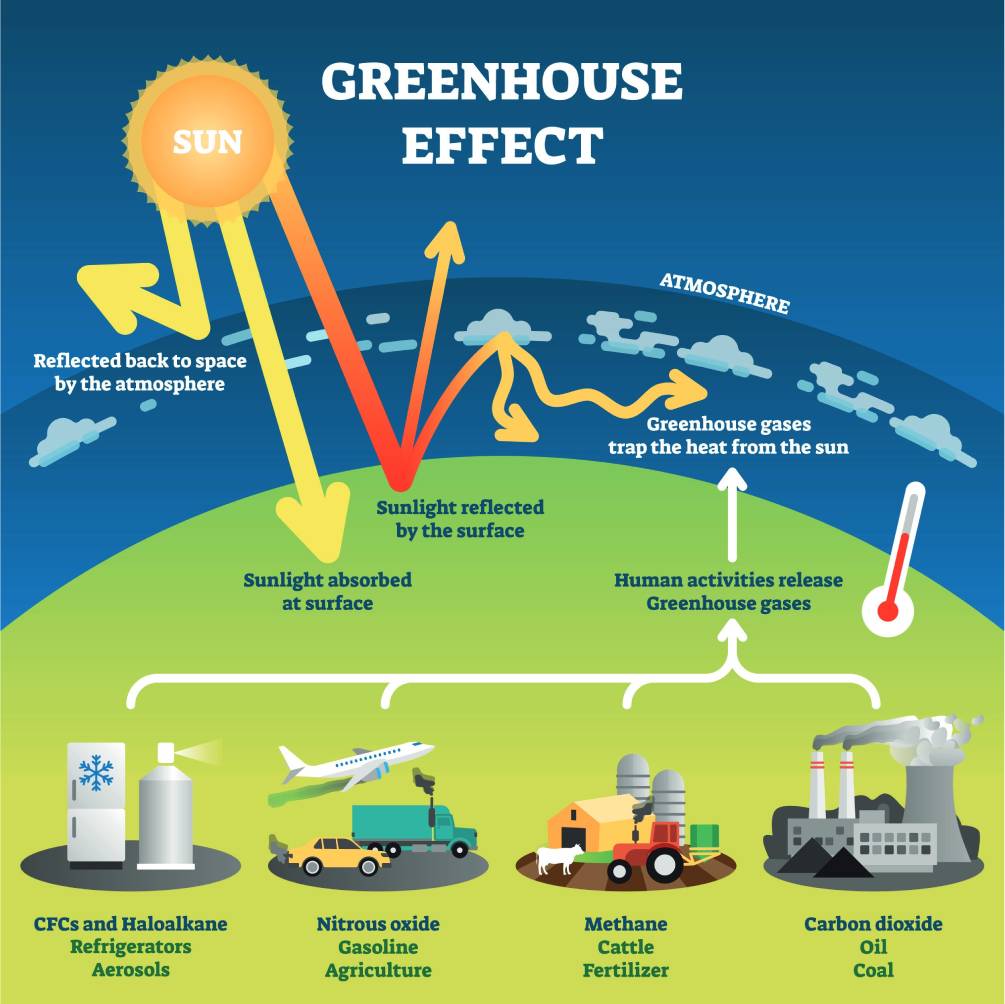First, What Even Is Climate Change?
It’s simple. Climate change refers to the long-term alteration of global weather patterns. This includes changes in temperature, precipitation, and extreme weather events. But keep in mind, that these changes are primarily caused by human activity, particularly the emission of greenhouse gases (such as carbon dioxide, methane, and nitrous oxide) from burning fossil fuels, deforestation, and other industrial processes.
But if that’s climate change, then…
What Is Global Warming?
Global warming is a cause of climate change. It refers to the rise in the Earth’s temperature due to an increase in greenhouse gases.
IMPORTANT TO KNOW: If global warming continues at the current rate, the Earth’s temperature could rise by 1.4-4 degrees Celsius by the year 2100. That could be catastrophic!
Don’t Mix Up Weather & Climate!
Weather is what we experience day-to-day or week-to-week. Over a week, for example, it could snow, rain, be humid, and finally, be sunny. There are many weather states that can change quickly and can be difficult to predict.
On the other hand, climate refers to long-term trends in weather in specific parts of the world. Different regions, like coastal areas or deserts, have unique climates. You measure climate in blocks of time spanning decades or even thousands of years.
Can You Guess What The Uae’s Climate Is?
It's arid, with dry, hot, and humid summers and generally warm and dry winters!
Climate Change: Earth’s Greatest Foe

Test Your Knowledge
What is the leading cause of global warming?
